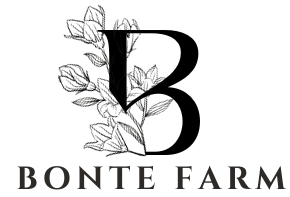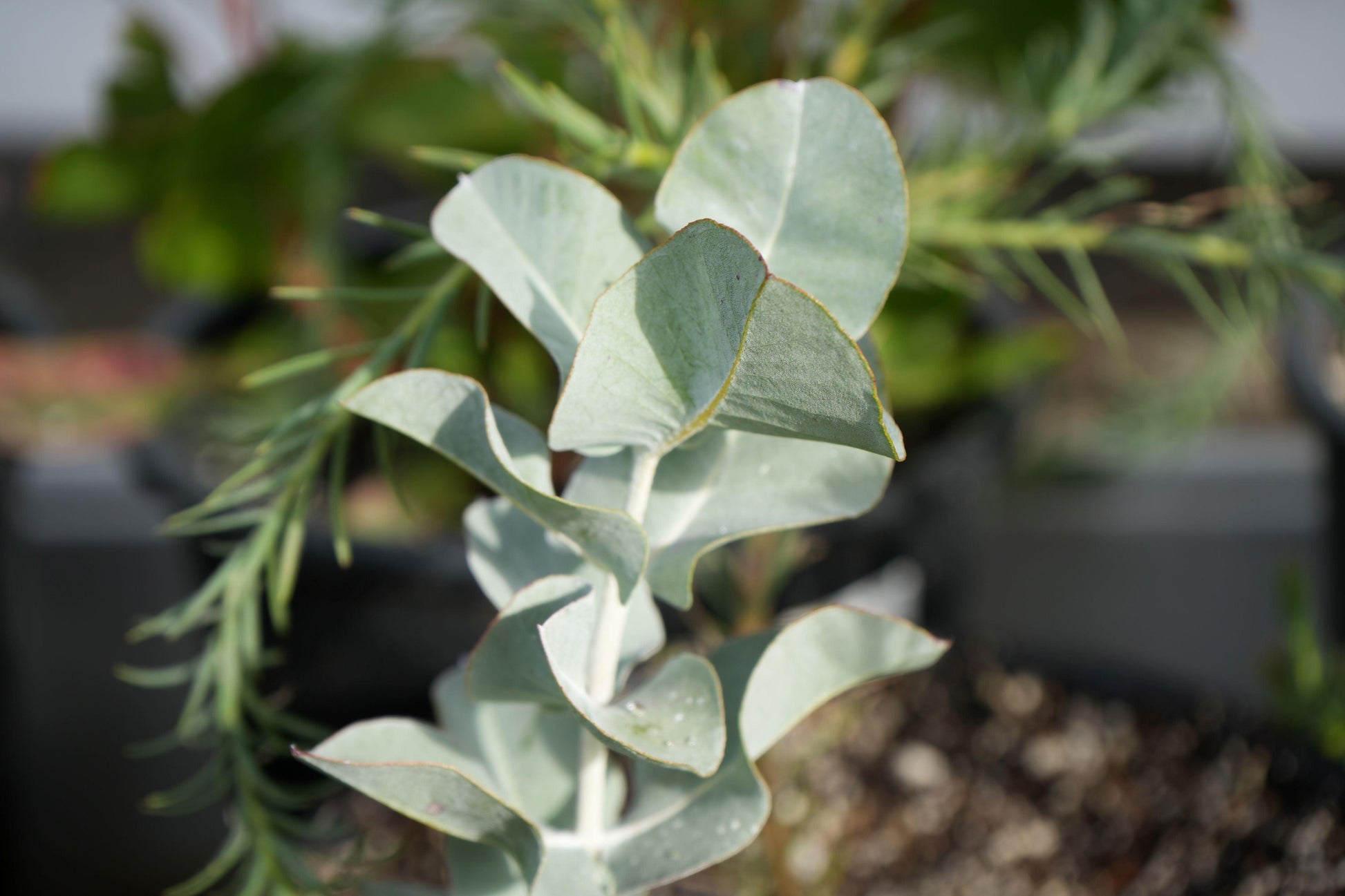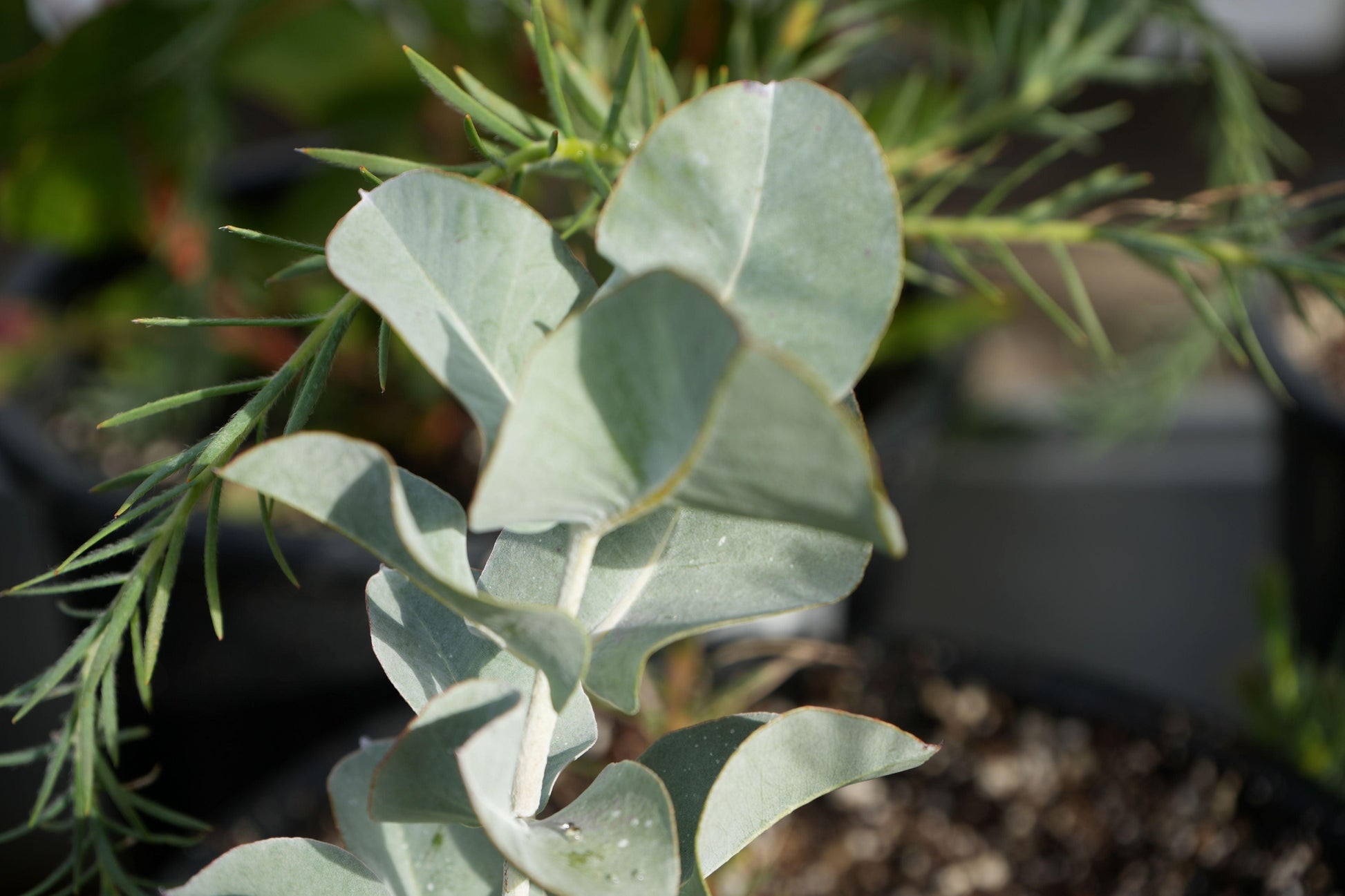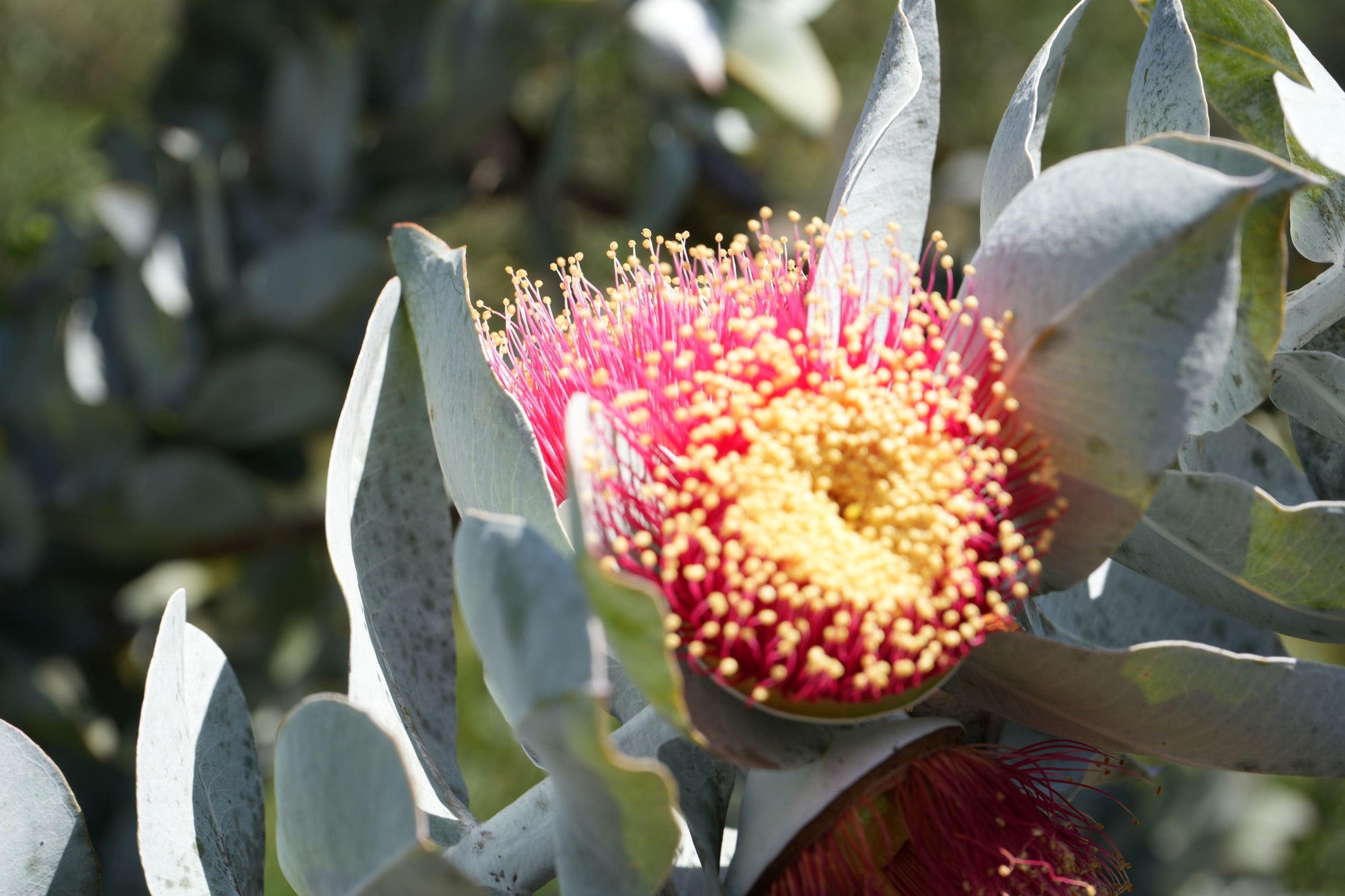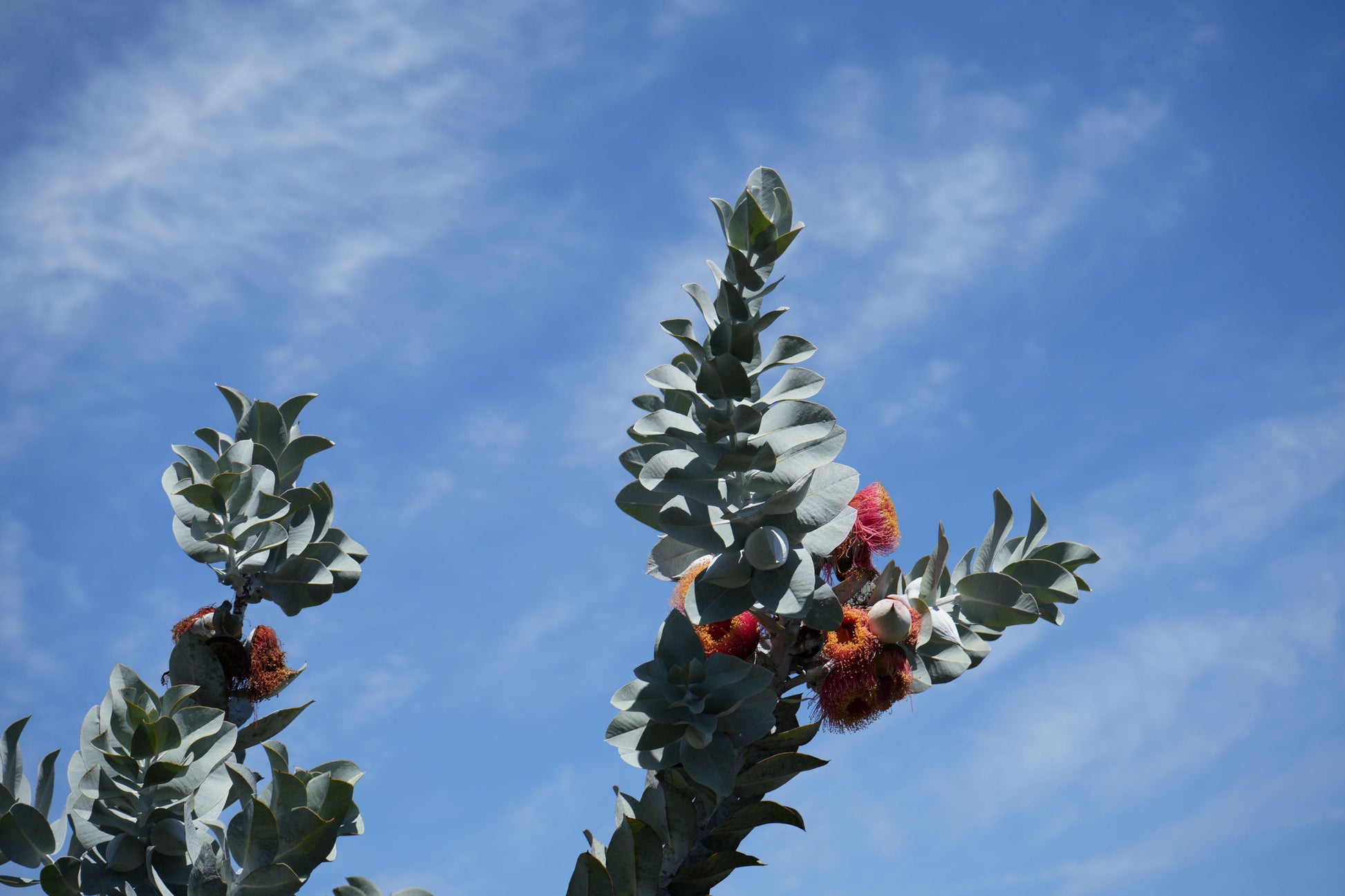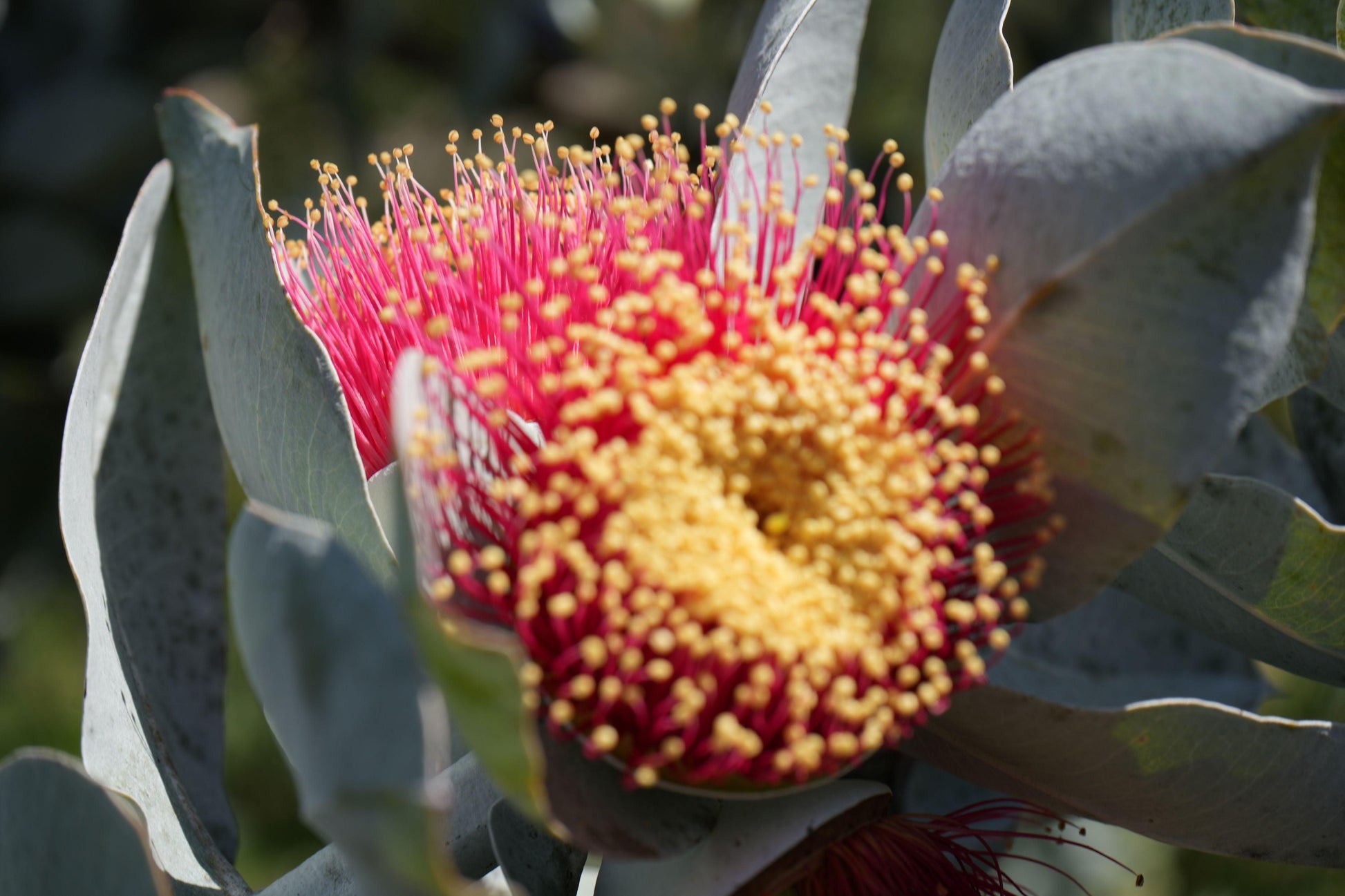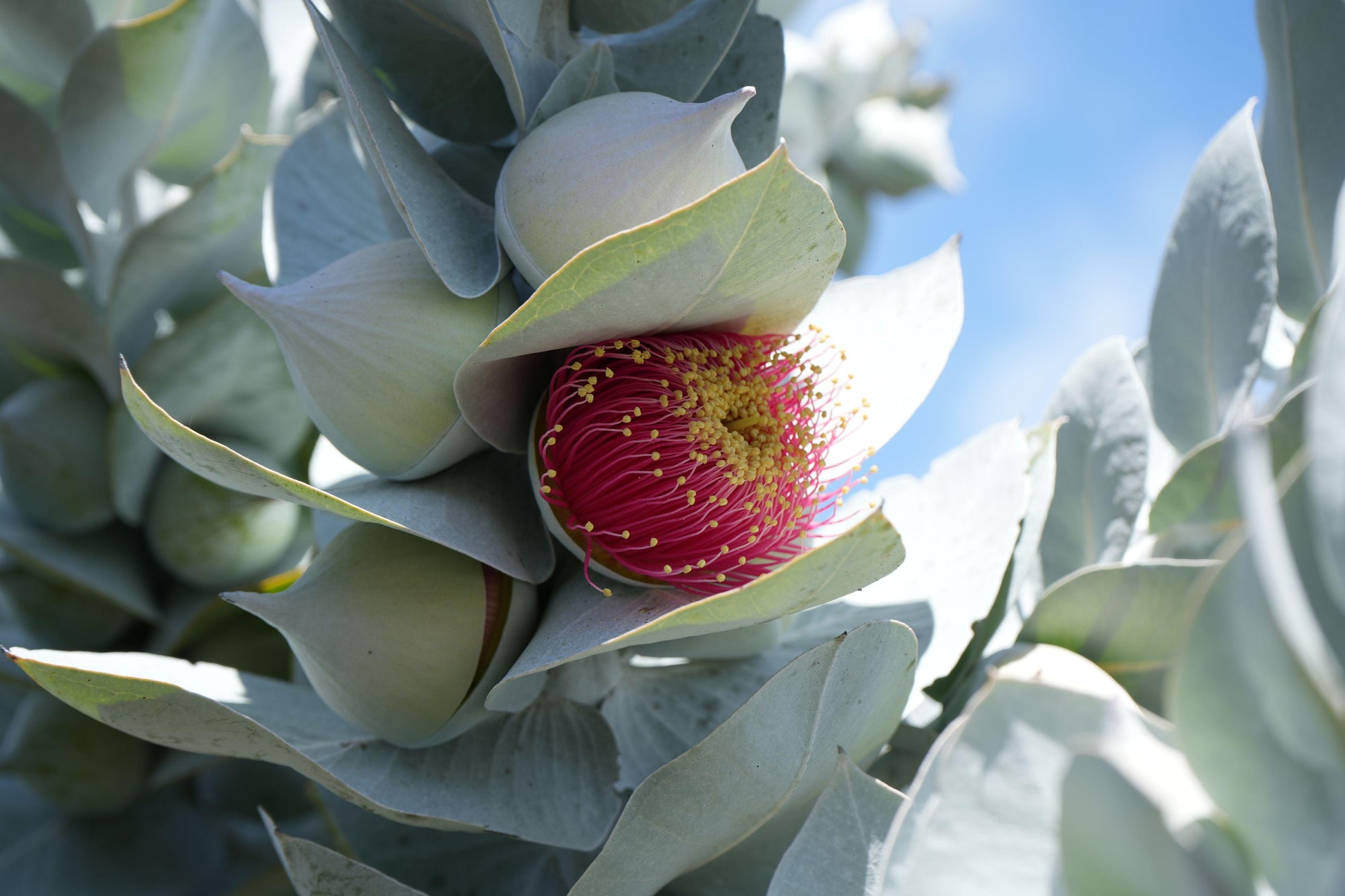Bonte Farm
Eucalyptus macrocarpa: The Spectacular Rose of the West
Eucalyptus macrocarpa: The Spectacular Rose of the West
Couldn't load pickup availability
Eucalyptus macrocarpa: A Dazzling Display of Western Beauty
Eucalyptus macrocarpa, also known as the Rose of the West or Mottlecah, is a truly remarkable and highly sought-after eucalyptus species native to Western Australia. Prized for its exceptionally large, vibrant flowers and attractive, often colorful, gumnuts, this tree makes a stunning statement in the landscape. Its unique characteristics and relatively manageable size for a eucalyptus make it a favorite among collectors and enthusiasts.
A Showstopper in Bloom:
- Spectacular Flowers: Eucalyptus macrocarpa boasts some of the largest and most impressive flowers of any eucalyptus. The blooms, typically in shades of red, pink, or occasionally cream, can reach up to 4 inches (10 cm) in diameter and are borne in profusion, creating a breathtaking display.
- Unique Gumnuts: The large, urn-shaped gumnuts, often ribbed and attractively colored, are another distinguishing feature of this species. They persist on the tree for extended periods, adding further ornamental value.
Botanical Characteristics:
- Scientific Name: Eucalyptus macrocarpa
- Common Names: Rose of the West, Mottlecah
- Growth Habit: Small to medium-sized tree or large shrub, often with a spreading habit.
- Foliage: Juvenile leaves are opposite, ovate, and often glaucous (bluish-grey). Adult leaves are alternate, lanceolate, and glossy green.
- Mature Size: Typically reaches 10-20 feet (3-6 meters) in height and a similar spread, although it can occasionally grow larger.
- USDA Hardiness Zones: 9-11. Prefers warm, frost-free climates.
Cultivation and Care:
- Sunlight: Requires full sun for optimal growth and flowering.
- Soil: Well-drained soil is essential. Tolerates a range of soil types, including sandy and loamy soils. Avoid heavy clay soils or areas with poor drainage.
- Water: Drought-tolerant once established. Water deeply and infrequently, allowing the soil to dry out somewhat between waterings. Avoid overwatering, which can lead to root rot.
- Fertilizer: Generally does not require heavy fertilization. A light application of a balanced fertilizer in spring can be beneficial.
- Temperature: Prefers warm temperatures and is tolerant of heat. Protect from prolonged frost, especially when young.
- Pruning: Minimal pruning is typically required. Remove any dead or damaged branches. Pruning can be done to shape the tree or control its size.
Landscape Use:
- Specimen Tree: Eucalyptus macrocarpa makes an excellent specimen tree, particularly in smaller gardens or landscapes where its manageable size is an asset.
- Feature Plant: Its showy flowers and unique gumnuts make it a standout feature in any garden.
- Xeriscaping: Ideal for water-wise gardens due to its drought tolerance.
- Coastal Gardens: Tolerates some salt spray, making it suitable for coastal locations.
Wildlife Attraction:
- Pollinators: The abundant nectar attracts a variety of pollinators, including bees, butterflies, and birds.
- Birds: The flowers provide a food source for nectar-feeding birds.
Pest and Disease Resistance:
- Generally resistant to most pests and diseases.
- May be susceptible to common eucalyptus pests such as psyllids or borers in some areas.
Propagation:
- Typically propagated from seed.
- Seed germination is generally improved by pre-treating the seeds, such as by soaking them in hot water.
Incorporating Eucalyptus into Your Landscape:
- Planting Location: Choose a sunny location with well-drained soil. Consider the mature size of the tree when selecting a planting site.
- Companion Plants: Plant with other drought-tolerant species that complement its unique features. Consider native Australian plants or other Mediterranean climate species.
- Winter Protection: In marginal climates, provide winter protection for young plants to prevent frost damage.
Relevant Plants: Rose of the West, Mottlecah, eucalyptus tree, Australian native plant, flowering tree, specimen tree, drought-tolerant tree, xeriscaping, coastal garden plant, USDA zone 9, USDA zone 10, USDA zone 11, red flowers, pink flowers, unique gumnuts, bird-attracting tree, pollinator-friendly plant.
Share
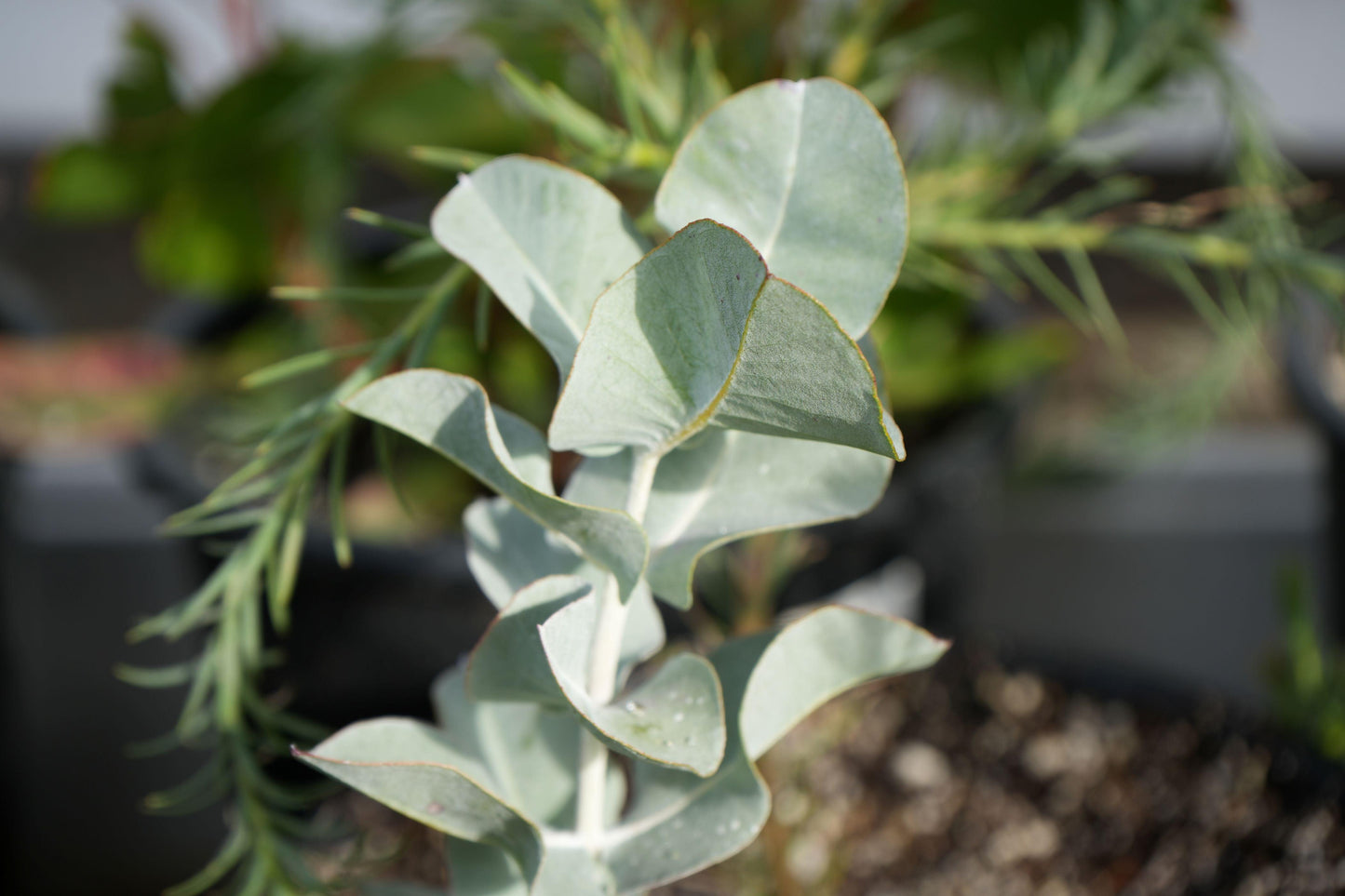
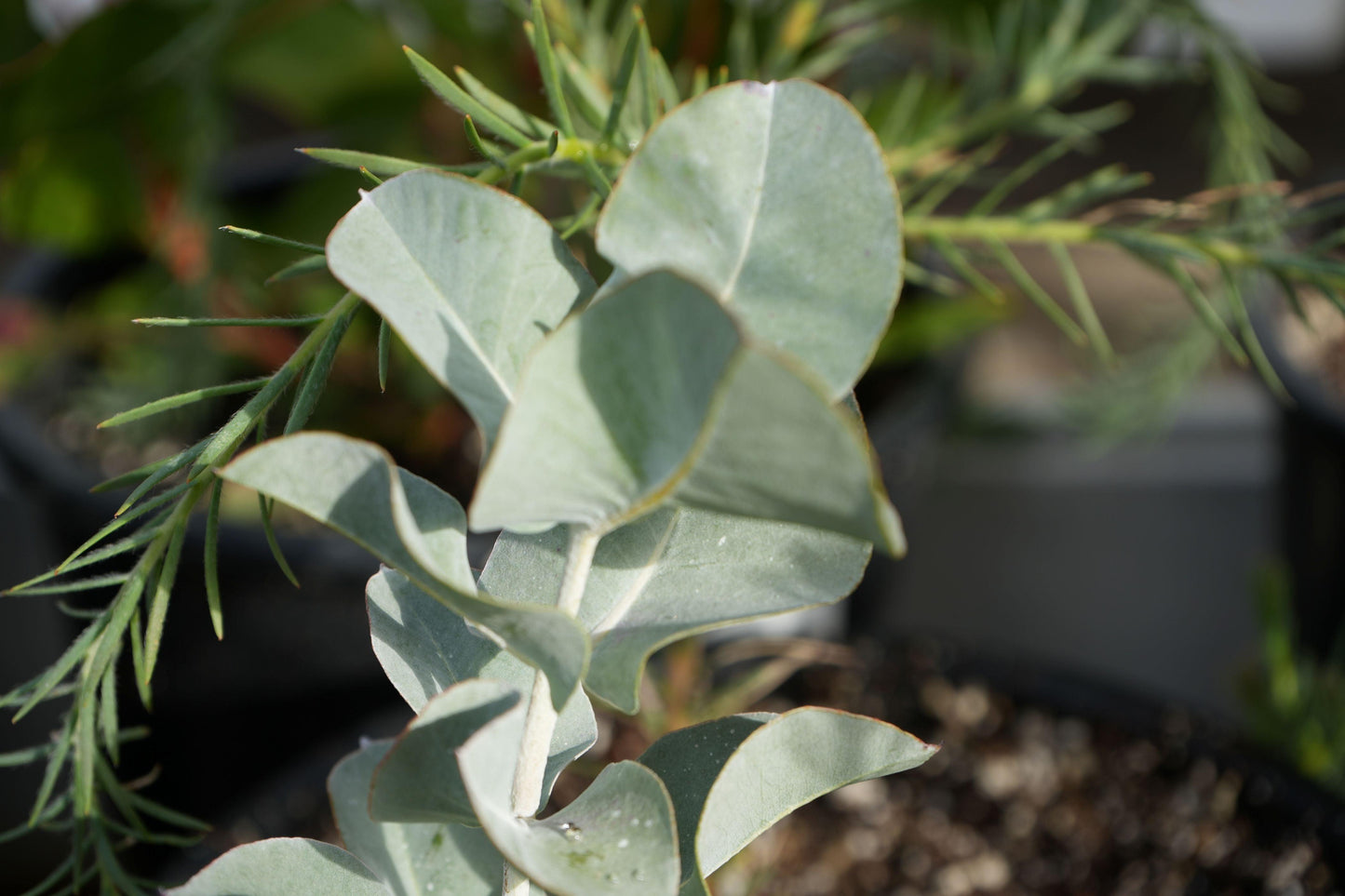
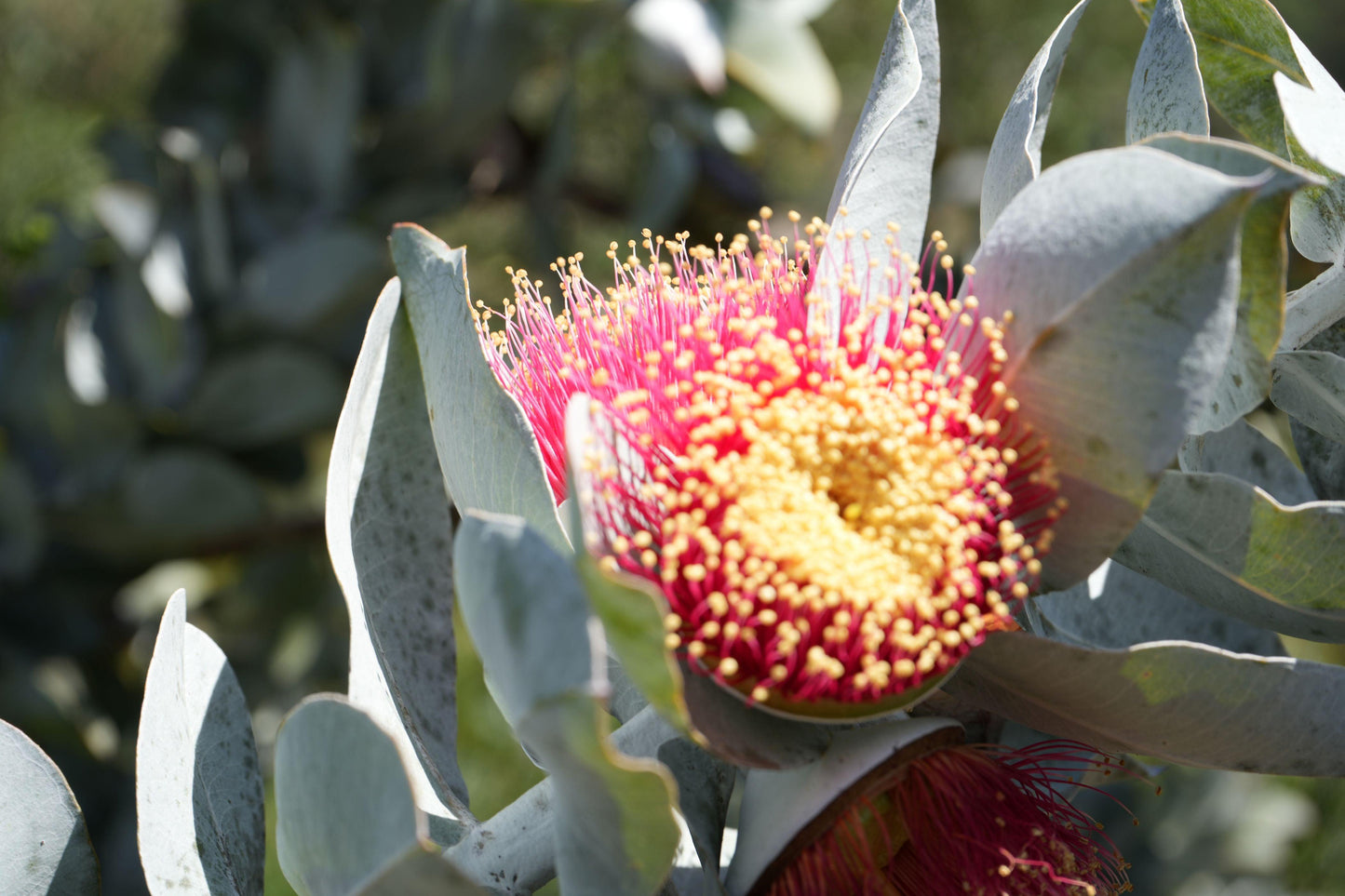
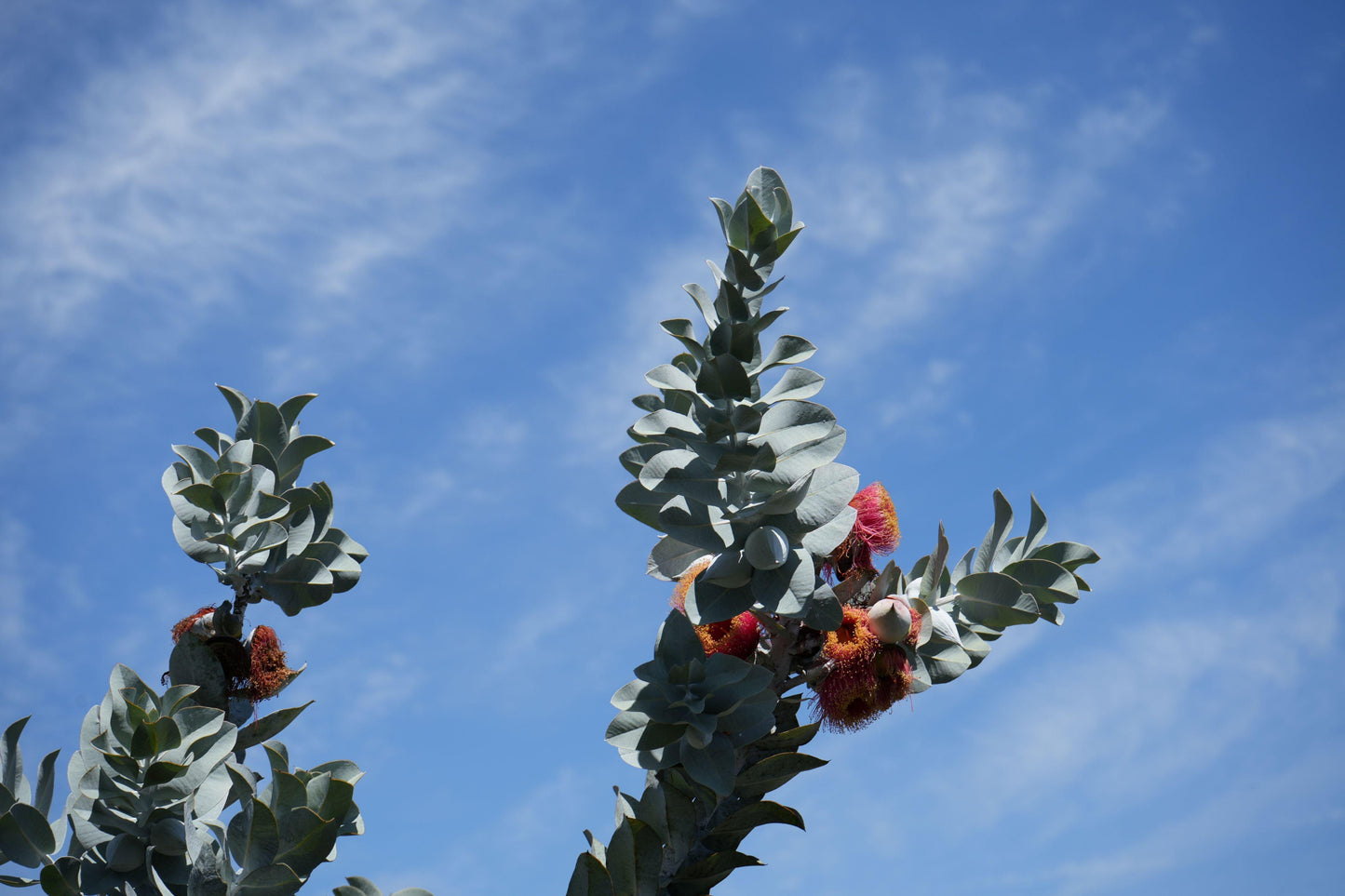
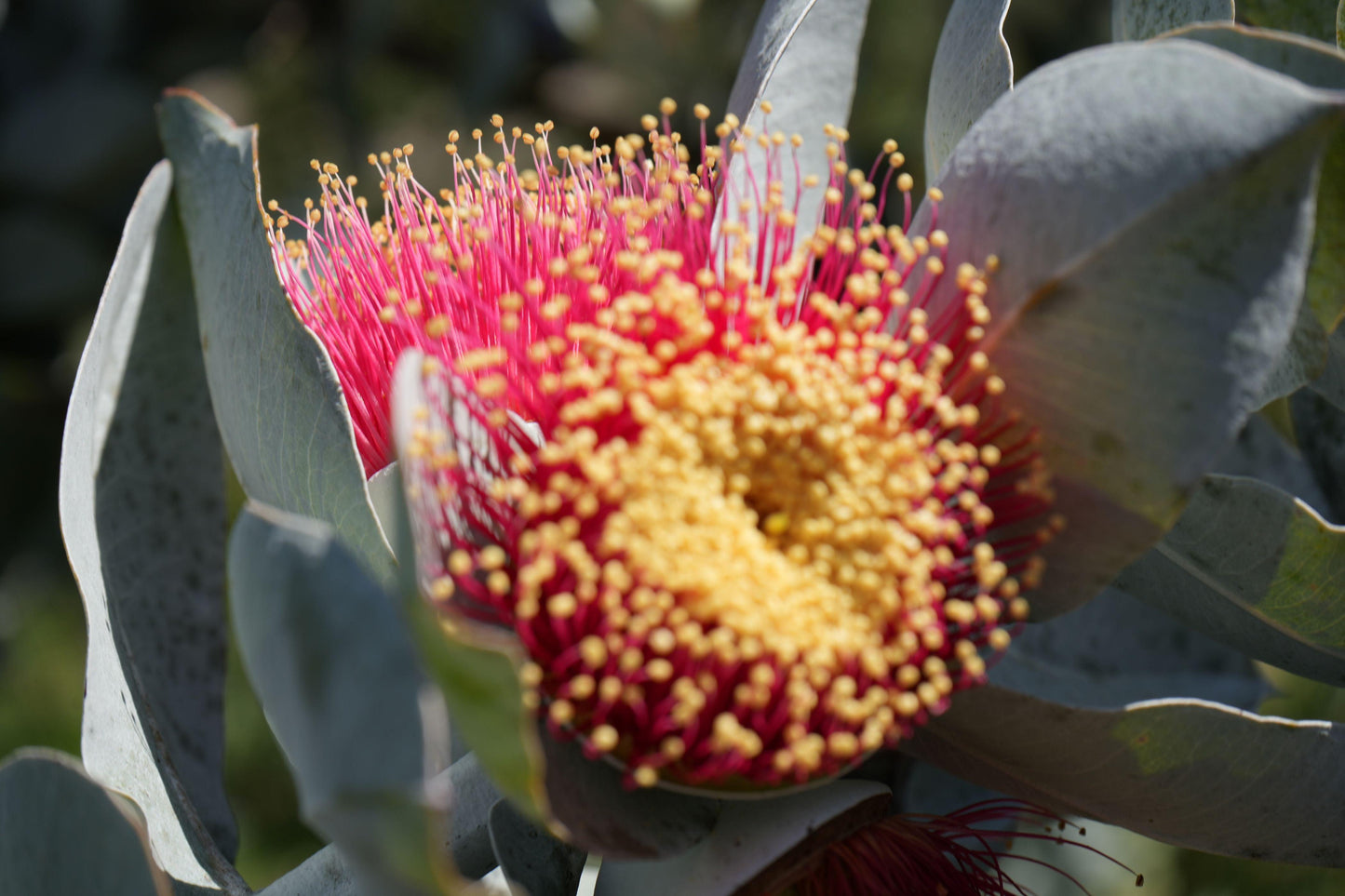
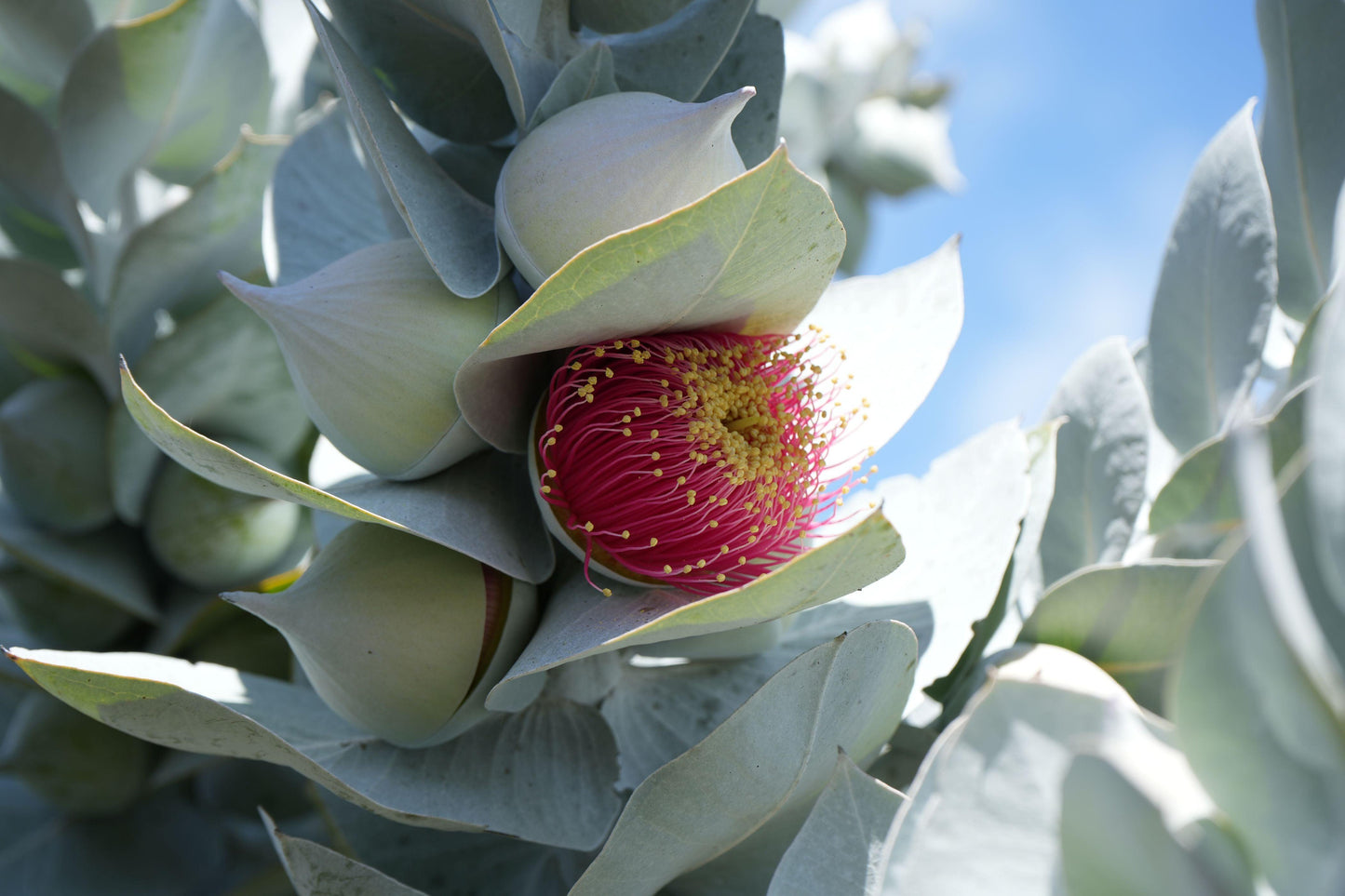
FAQs
Got a question? We are here to answer
